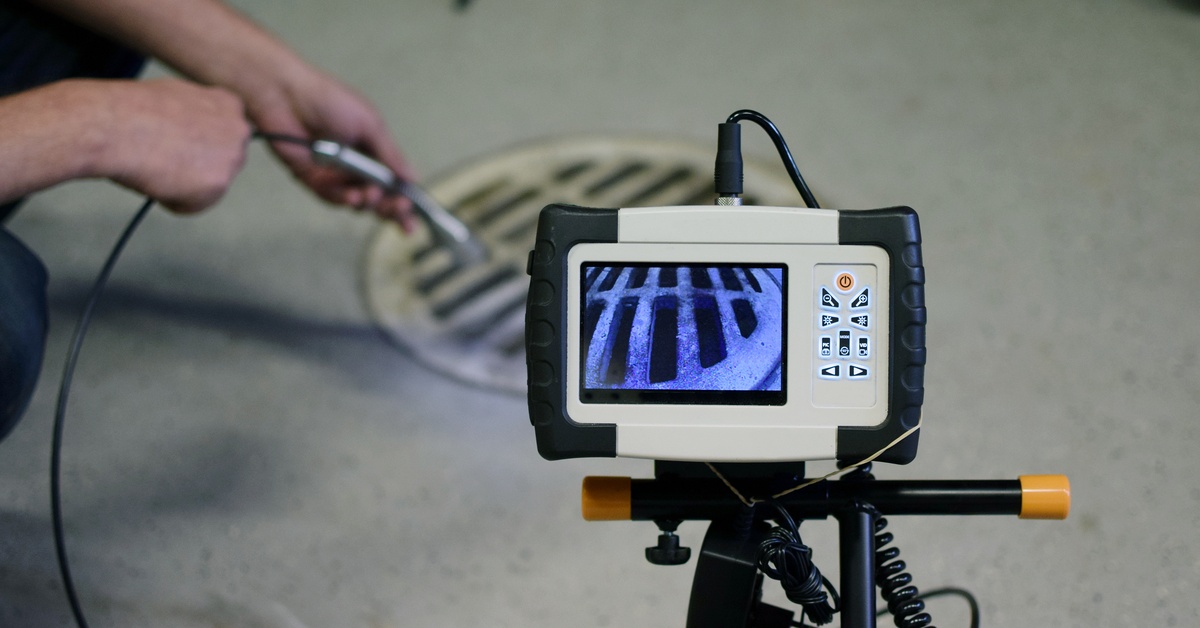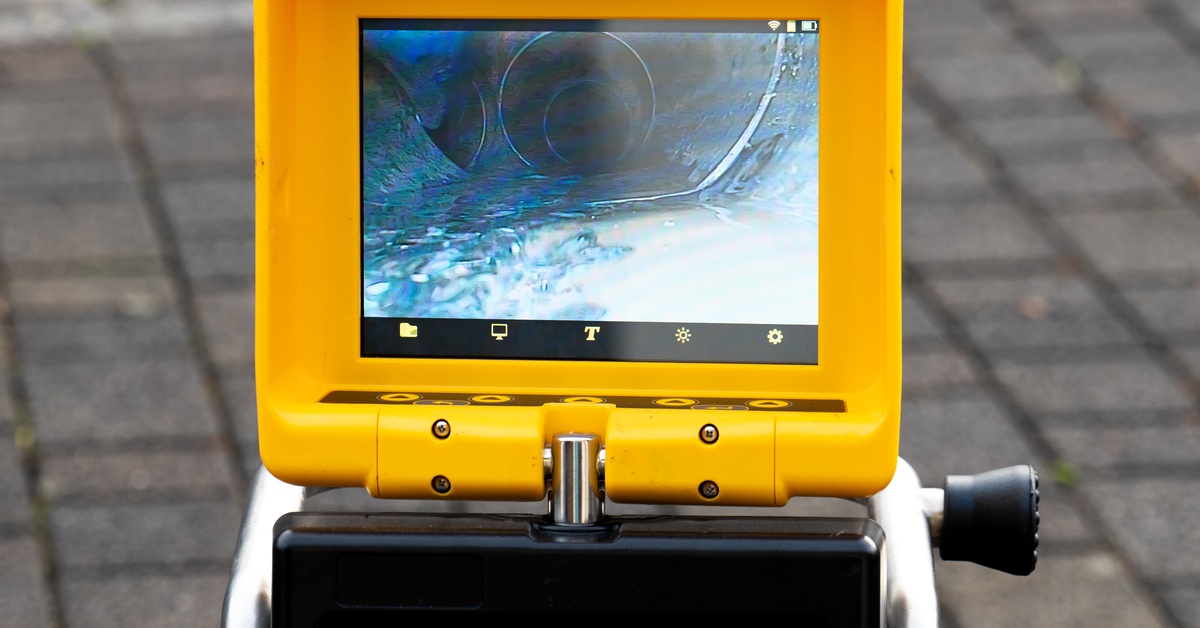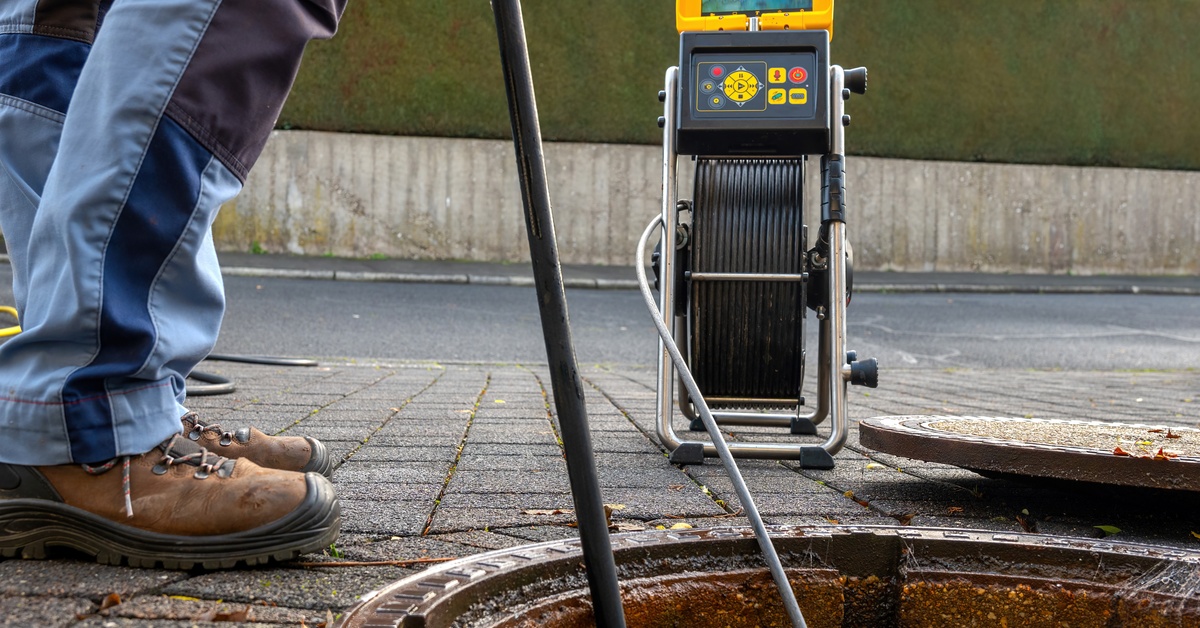
Author: Tyler Mashek
Maintaining sewer systems requires precise diagnostic tools to identify and resolve issues before they escalate into costly failures. Sewer camera inspections reveal common problems that would otherwise remain hidden.
For operators in facility management, construction, and hydro-excavation, understanding what these inspections can uncover is fundamental to proactive maintenance. Discover what issues a sewer camera will expose to enable targeted and effective repairs.
Blockages occur when materials like debris, grease, or foreign objects accumulate and restrict or completely stop the flow within a sewer line. A sewer camera inspection provides real-time visuals that identify the exact location, size, and composition of the obstruction. This visual confirmation allows operators to formulate a precise removal strategy without unnecessary guesswork.
With clear information on what’s causing the blockage, operators will know which drain cleaning or high-pressure water-jetting tools to clear the line effectively, minimizing downtime. A camera helps determine if the obstruction is a simple buildup or a more complex problem requiring additional intervention.
Tree roots are a persistent threat to sewer systems, as they may infiltrate pipes through small cracks or joint gaps in search of water. Once inside, they grow and expand, causing obstructions and structural damage to the pipe. Revealing problems with a sewer camera inspection, especially tree root intrusion, is essential for pinpointing the exact sections of the pipeline that are compromised.
Operators can view the extent of the root mass and assess the associated pipe damage with this technology. This detailed visual evidence helps determine whether mechanical root cutting, chemical treatments, or complete pipe segment replacement is the most appropriate course of action for restoration.
Pipes develop cracks or even collapse entirely due to factors such as aging infrastructure, shifting ground, or excess weight from above. Such damage compromises the structural integrity of the sewer line, leading to leaks, soil contamination, and major service disruptions.
A sewer camera delivers clear, high-resolution footage of the pipe’s interior, showing the precise location and severity of cracks or collapses. The diagnostic capabilities of these cameras are vital for planning repairs, whether that involves trenchless pipe lining or traditional excavation and replacement.
A “belly” or sag in a sewer pipe creates a low section where water and solid waste collect, leading to recurrent blockages and unpleasant odors. This issue often occurs from poor soil compaction during installation or subsequent ground settlement over time.
Sewer cameras accurately identify these sagging sections by providing clear visuals of standing water or accumulated debris within the pipe. Advance the camera through the line to map the length and depth of the belly. The information gained is necessary for determining the correct repair method, such as re-leveling the pipe or providing additional support to restore proper grade and flow.

Pipe joints become misaligned or offset when the ground settles or if there was an improper initial installation. These offsets create a “lip” at the connection point, which catches solid waste and leads to blockages. Additionally, misaligned joints often result in leaks that allow wastewater to escape into the surrounding soil, potentially causing ground instability.
Using high-quality sewer inspection cameras from Varco Supply allows operators to get a close-up view of each joint and clearly identify misalignment or separation. This precise visual data allows for targeted repairs, such as sealing the joint internally or excavating to realign the pipe sections.
Over many years of service, pipes made from materials like cast iron, steel, or concrete may experience corrosion and degradation. This process thins the pipe walls, weakens the structure, and eventually leads to leaks or complete structural failure. A high-resolution camera offers a detailed view of the pipe’s internal surface, revealing the extent of corrosion, flaking, or pitting.
This visual assessment helps operators evaluate the remaining service life of the pipe and decide on the best course of action. Based on these findings, a team may choose between pipe rehabilitation techniques like lining or a full replacement of the deteriorated sections.
In many municipal and industrial sewer systems, the accumulation of fats, oils, and grease (FOG) is a primary cause of blockages. Grease congeals on the interior walls of pipes, gradually narrowing the diameter and restricting flow until a complete obstruction occurs. Sewer cameras effectively pinpoint areas with grease buildup, allowing maintenance crews to assess their severity.
The camera footage provides a clear picture of the pipe’s capacity reduction. This insight allows for scheduled and targeted cleaning with high-pressure water-jetting and vacuum equipment, preventing emergency backups and maintaining system flow.
Leaks in a sewer system result from various issues, including cracks, faulty joints, or corrosion. These leaks allow wastewater to seep out of the pipe, which contaminates groundwater and erodes the soil supporting the pipe, leading to further structural problems.
A sewer camera inspection identifies the source of the leak by revealing cracks, holes, or separated joints. Operators trace water infiltration patterns or observe water escaping from the pipe in the footage. Precise localization of leaks helps repair crews perform targeted repairs, saving time and resources compared to exploratory digging.

The connection points between sewer pipes and maintenance holes are vulnerable to structural failure. A collapse at this junction can create obstructions, cause severe leaks, and compromise the integrity of the pipe and the maintenance hole structure. A sewer camera provides a detailed visual assessment of these connection points from within the pipe.
Operators may identify signs of cracking, displacement, or complete collapse where the pipe enters the maintenance hole. This information is essential for prioritizing repairs and allocating the necessary resources to address the problem before it leads to a major system failure.
The slope, or grade, of a sewer pipe is fundamental to its function, as it relies on gravity to transport wastewater. A pipe installed with a negative grade will cause water to pool, while a slope that’s too steep causes liquids to outrun solids, leaving them behind. Combining a sewer camera with local equipment provides data on the pipe’s slope.
By observing flow patterns and measuring depth changes, operators identify sections with an improper grade. These findings offer better corrective actions, such as regrading the affected pipe section or installing additional supports to restore the optimal slope for consistent flow.
Sewer inspection cameras are indispensable for modern infrastructure maintenance, providing clear and actionable data that saves time, reduces costs, and prevents catastrophic failures. The detailed insights these cameras offer allow for a proactive rather than a reactive approach to sewer system management. Explore Varco Supply’s selection of sewer camera inspection systems to equip your operation with the tools needed for accurate diagnostics and effective maintenance.